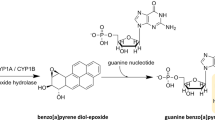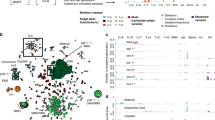Abstract
The processes by which certain classes of toxic compounds or their metabolites may react with DNA to alter the genetic information contained in subsequent generations of cells or organisms are a major component of hazard associated with exposure to chemicals in the environment. Many classes of chemicals may form DNA adducts and there may or may not be a defined mechanism to remove a particular adduct from DNA independent of replication. Many compounds and metabolites that bind DNA also readily bind existing proteins; some classes of toxins and DNA adducts have the capacity to inactivate a repair enzyme and divert the repair process competitively. This paper formulates anintracellular dynamic model for one aspect of the action of toxins that form DNA adducts, recognizing a capacity for removal of those adducts by a repair enzyme combined with reaction of the toxin and/or the DNA adduct to inactivate the repair enzyme. This particular model illustrates the possible saturation of repair enzyme capacity by the toxin dosage and shows that bistable behavior can occur, with the potential to induce abrupt shifts away from steady-state equilibria. The model suggests that bistable behavior, dose and variation between individuals or tissues may combine under certain conditions to amplify the biological effect of dose observed as DNA aduction and its consequences as mutation. A model recognizing stochastic phenomena also indicates that variation in within-cell toxin concentration may promote jumps between stable equilibria.
Similar content being viewed by others
References
Alberts B., D. Bray, J. Lewis, M. Ratt, K. Roberts and J. D. Watson. 1994.Molecular Biology of the Cell. New York: Garland.
Aldous, D. 1989.Probability Approximations via the Poisson Clumping Heuristic. New York: Springer-Verlag.
Beltrami, E. 1987.Mathematics for Dynamic Modeling. New York: Academic Press.
Board on Environmental Studies and Toxicology. Commission on Life Sciences. National Research Council. 1989. Biologic significance of DNA adducts and protein adducts. InDrinking Water and Health. Selected Issues in Risk Assessment, Vol. 9, pp. 6–59. Washington, DC: National Academic Press.
Bronstein, S. M., J. E. Cochrane, T. R. Craft, J. A. Swenberg and T. R. Skopek. 1991. Toxicity, mutagenicity, and mutational specitra ofN-ethyl-N-nitrosourea in human cell lines with different DNA repair phenotypes.Cancer Res. 51, 5188–5197.
Bronstein, S. M., T. R. Skopek and J. A. Swenberg. 1992. Efficient repair ofO 6-ethylguanine, but notO 4-ethylthymine orO 2-ethylthymine, is dependent uponO 6-alkylguanine-DNA alkyltransferase and nucleotide excision repair activities in human cells.Cancer Res. 52, 2008–2011.
Bucklew, J. A. 1990.Large Deviation Techniques in Decision, Simulation, and Estimation. New York: Wiley.
Burkhart, J. G. 1995. Perspectives on molecular assays for measuring mutation in humans and rodents.Environ. Mol. Mutagen. 25, 88–101.
Chae, M. Y., M. G. McDougall, M. E. Dolan, K. Swenn, A. E. Pegg and R. C. Moschel. 1994. SubstitutedO 6-benzylguanine derivatives and their inactivation of humanO 6-alkylguanine-DNA alkyltransferase.J. Med. Chem. 37, 342–347.
Fox, M. and G. P. Margison. 1988. Expression of anE. coli O 6-alkylguanine DNA alkyltransferase gene in Chinese hamster cells protects againstN-methyl andN-ethyl-nitrosourea induced reverse mutation at the hypoxanthine phosphoribosyl transferase locus.Mutagenesis 3, 409–413.
Freidlin, M. I. and A. D. Wentzell. 1984.Random Perturbations of Dynamical Systems. New York: Springer-Verlag.
Hodgman, C. D. (Ed). 1963.CRC Standard Mathematical Tables, 12th ed. Cleveland, OH: Chemical Rubber Publishing Company.
Hora, J. F., A. Eastman and E. Bresnick. 1983.O 6-methyl guanine methyltransferase rat liver.Biochemistry 22, 3759–3763.
Lijinsky, W., A. E. Pegg, M. R. Anver and R. C. Moschel. 1994. Effects of inhibition ofO 6-alkylguanine-DNA alkyltransferase in rats on carcinogenesis by methylnitrosourea and ethylnitrosourea.Japan.J. Cancer Res. 85, 226–230.
Michelson, J. 1993. Biology of disease, cellular selection in the genesis of multicellular organization.Laboratory Investigation 69, 136–152.
Mineura, K., I. Izumi, K. Watanabe, M. Kowada, K. Kohda, K. Koyama, I. Terashima and M. Ikenaga, 1994. Enhancing effect ofO 6-alkylguanine derivatives on chlorethylnitrosourea cytotoxicity toward tumor cells.Int. J. Cancer 58, 706–712.
Pegg, A. E. 1990. MammalianO 6-alkylguanine-DNA alkyltransferase: regulation and importance in response to alkylating carcinogenic and therapeutic agents.Cancer Res. 50, 6119–6129.
Pegg, A. E. and T. L. Byers, 1992. Repair of DNA containingO 6-alkylguanine.FASEB J.6, 2302–2310.
Press, W. H., S. A. Teukolsky, W. T. Vetterling and B. P. Flanney, 1992.Numerical Recipes in Fortran, 2nd. ed. Cambridge, UK: Cambridge University Press.
Schuss, Z. 1980.Theory and Applications of Stochastic Differential Equations. New York: Wiley.
Simonian, A. 1995. Asymptotic distribution of exit time for small-noise diffusions.SIAM J. Appl. Math. 55, 809–826.
Singer, B. 1985. In vivo formation and persistence of modified nucleosides resulting from alkylating agents.Environ. Health Persp. 62, 41–48.
Sommerfeld, H. J., A. K. Meeker, E. M. Posadas and D. S. Coffey. 1995. Frontiers in prostate cancer.Cancer Suppl. 75, 2027–2035.
Strogatz, S. H. 1994.Nonlinear Dynamics and Chaos. Reading, MA: Addison-Wesley.
Varadhan, S. 1984.Large Deviations and Applications. Philadelphia, PA: SIAM.
Author information
Authors and Affiliations
Rights and permissions
About this article
Cite this article
Gaver, D.P., Jacobs, P.A., Carpenter, R.L. et al. A mathematical model for intracellular effects of toxins on DNA adduction and repair. Bltn Mathcal Biology 59, 89–106 (1997). https://doi.org/10.1007/BF02459472
Received:
Accepted:
Issue Date:
DOI: https://doi.org/10.1007/BF02459472




